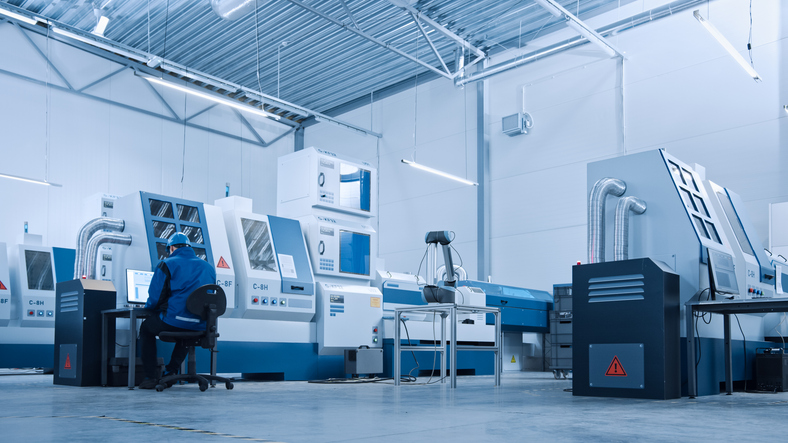Since the first introduction of the CNC machine in 1952, CNC machining has been used to create a wide range of products for various industries. CNC machining is a manufacturing method that involves removing material with a cutting tool that is under automated control. This methodology revolutionized the manufacturing of plastics, and the advancements of CNC machining continues to improve the fabrication of plastic parts and products. Let’s explore some of these advancements.
The First CNC Machine
The first commercial CNC machine was developed in Cincinnati, Ohio in collaboration with the Massachusetts Institute of Technology (MIT) in 1952. The creation of the machine allowed manufacturers to create products with complex shapes that could not be accomplished with traditional methods or techniques.
Addition of Digital Technology
Early CNC machines used punched tape, which was commonly used in telecommunications and data storage. Punched tape consisted of small holes that had been punched through paper. Compressed air would pass through these holds and be directed to certain mechanisms.
This technology was replaced by analog computing technologies, which were then replaced by digital technologies. Each of these advancements had improved efficiency, however, the addition of digital technology to CNC machining greatly improved production and made the process automated.
Advancements in Automation
Modern CNC machines incorporate high-resolution sensors and advanced control algorithms, which provide precision, efficiency, and versatility to the production of plastic products. CNC machines are also integrating Artificial Intelligence (AI) to their automation and manufacturing processes, allowing for even more efficiency and accuracy. Manufacturers are now easily able to machine parts and products that meet the exact specifications of the customer with extreme accuracy and repeatability on quick timelines.
Future Advancements of CNC Machining
While CNC machining has come a long way since 1952 and each advancement of CNC machining has allowed for even more accurate and efficient production, there are still areas to improve upon. Some of the future advancements of CNC machining include:
AI, Automation, and Robotics
AI is everywhere today and it will continue to infiltrate various industries and processes to streamline production. The continuation of AI integration, further automation, and the implementation of robotics will lead to automated tool changes and material handling. This will allow for enhanced production speed, reducing human error, and more accurately producing even more complex designs.
Sustainability
As more and more people become concerned with sustainable manufacturing processes, CNC machining will continue to grow in popularity. Since this process is so efficient and accurate, it produces less waste than other manufacturing methods while also saving on energy use.
There are still areas to improve upon, however. The implementation of automation will continue to make the process more sustainable, and engineers continue to make strides toward further sustainability measures in CNC machining.
IoT Integration
CNC machines can be integrated with the Internet of Things or IoT. This allows the machines to be part of a connected network. IoT integration provides real-time data sharing and analysis to predict issues, optimize efficiency, and ensure proactive maintenance measures are being completed. The more IoT integration happens, the smarter and more adaptive the manufacturing process, thus improving efficiency and streamlining processes.
Ensinger Uses the Advancements in CNC Machining to Improve Plastic Fabrication
At Ensinger, we have been using the advancements in CNC machining to improve plastic fabrication for over 80 years. Our team works with you to help optimize your design, assist with material selection, and then perform the manufacturing process your product requires. From CNC machining to injection molding to plastic fabrication, we have you covered.
Contact our team today to learn more or to get started on your next project.
